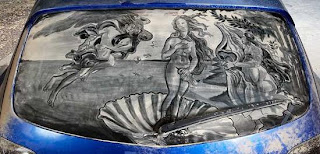The study of the mental representations and processes underlying creative thought belongs to the domains of psychology and cognitive science.
A psychodynamic approach to understanding creativity was proposed by Sigmund Freud, who suggested that creativity arises as a result of frustrated desires for fame, fortune, and love, with the energy that was previously tied up in frustration and emotional tension in the neurosis being sublimated into creative activity. Freud later retracted this view.
Graham Wallas
Graham Wallas & Richard Smith, in their work Art of Thought, published in 1926, presented one of the first models of the creative process. In the Wallas stage model, creative insights and illuminations may be explained by a process consisting of 5 stages:
(i) preparation (preparatory work on a problem that focuses the individual's mind on the problem and explores the problem's dimensions),
(ii) incubation (where the problem is internalized into the unconscious mind and nothing appears externally to be happening),
(iii) intimation (the creative person gets a 'feeling' that a solution is on its way),
(iv) illumination or insight (where the creative idea bursts forth from its preconscious processing into conscious awareness); and
(v) verification (where the idea is consciously verified, elaborated, and then applied).
In numerous publications, Wallas' model is just treated as four stages, with "intimation" seen as a sub-stage. There has been some empirical research looking at whether, as the concept of "incubation" in Wallas' model implies, a period of interruption or rest from a problem may aid creative problem-solving. Ward lists various hypotheses that have been advanced to explain why incubation may aid creative problem-solving, and notes how some empirical evidence is consistent with the hypothesis that incubation aids creative problem-solving in that it enables "forgetting" of misleading clues. Absence of incubation may lead the problem solver to become fixated on inappropriate strategies of solving the problem. This work disputes the earlier hypothesis that creative solutions to problems arise mysteriously from the unconscious mind while the conscious mind is occupied on other tasks.
Wallas considered creativity to be a legacy of the evolutionary process, which allowed humans to quickly adapt to rapidly changing environments. Simonton provides an updated perspective on this view in his book, Origins of genius: Darwinian perspectives on creativity.
J.P. Guilford
Guilford performed important work in the field of creativity, drawing a distinction between convergent and divergent production (commonly renamed convergent and divergent thinking). Convergent thinking involves aiming for a single, correct solution to a problem, whereas divergent thinking involves creative generation of multiple answers to a set problem. Divergent thinking is sometimes used as a synonym for creativity in psychology literature. Other researchers have occasionally used the terms flexible thinking or fluid intelligence, which are roughly similar to (but not synonymous with) creativity.
Arthur Koestler
In The Act of Creation, Arthur Koestler lists three types of creative individual - the Artist, the Sage and the Jester.
Believers in this trinity hold all three elements necessary in business and can identify them all in "truly creative" companies as well. Koestler introduced the concept of bisociation - that creativity arises as a result of the intersection of two quite different frames of reference.
Geneplore model
In 1992, Finke et al. proposed the 'Geneplore' model, in which creativity takes place in two phases: a generative phase, where an individual constructs mental representations called preinventive structures, and an exploratory phase where those structures are used to come up with creative ideas. Weisberg argued, by contrast, that creativity only involves ordinary cognitive processes yielding extraordinary results.
Conceptual blending
In the 90s, various approaches in cognitive science that dealt with metaphor, analogy and structure mapping have been converging, and a new integrative approach to the study of creativity in science, art and humor has emerged under the label conceptual blending.
"Creativity is the ability to illustrate what is outside the box from within the box." -The Ride




































